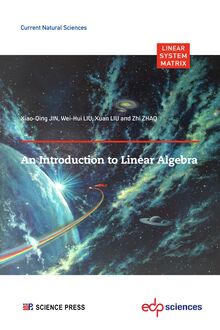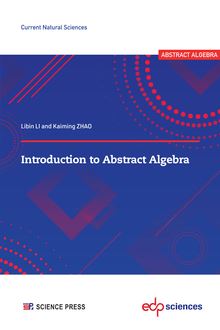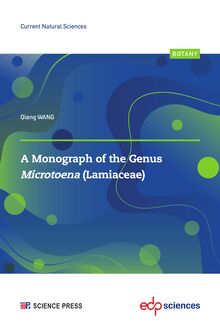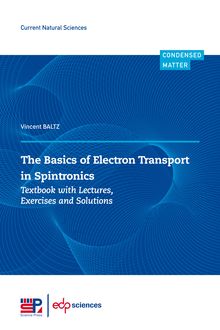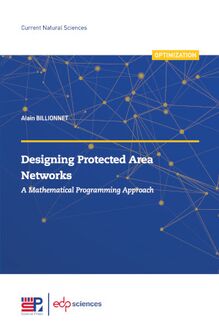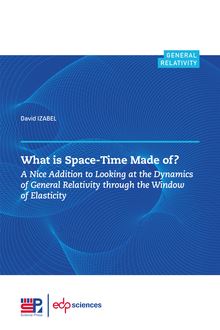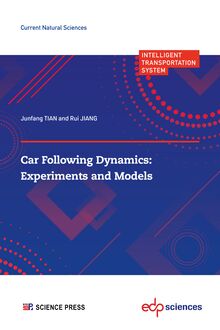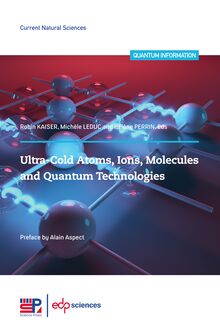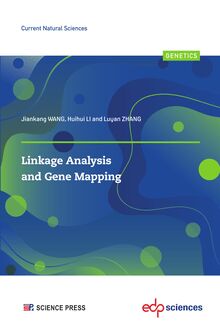The basics of electron transport in spintronics , livre ebook
170
pages
English
Ebooks
2023
Obtenez un accès à la bibliothèque pour le consulter en ligne En savoir plus
Découvre YouScribe en t'inscrivant gratuitement
Découvre YouScribe en t'inscrivant gratuitement
170
pages
English
Ebooks
2023
Obtenez un accès à la bibliothèque pour le consulter en ligne En savoir plus
Publié par
Date de parution
25 mai 2023
Nombre de lectures
2
EAN13
9782759829187
Langue
English
Poids de l'ouvrage
19 Mo
Here is the ideal book to grasp the basic concepts of spin-dependent electron transport and to develop a deep physical understanding of the subject. A careful selection of key notions provides a concise and effective framework. Learning how to use these notions is successfully supported by ten extended exercises with complete solutions. Common terms and specialist jargon are clearly explained, and the way in which subtleties complicate phenomena, without altering their physical basis, is pedagogically addressed. The rigorous and harmonised system of notation and units adopted throughout the book allows the reader to navigate easily between concepts and to gain a broad view of the subject. Based on a series of lectures given to MSc and PhD students, this book will appeal to a wide range of readers, from students at the graduate level to researchers and engineers.
Foreword................................................... III
Preface..................................................... V
CHAPTER 1
Introduction .................................................1
CHAPTER 2
First Notions About Electron and Spin Transport– CIP-GMR, IEC, AMR . 7
2.1 Types of Model.......................................... 7
2.2 Two-Current Model, Ohm’s Law,Spin-Dependent Mean Free Path ... 9
2.3 Band Structures, Spin-Dependent Fermi Surface & Density of State . . 12
2.4 Spin-Dependent Scattering, the sd Model...................... 15
2.5 From Impurity Scattering to Heterostructures – CIP-GMR, IEC ..... 17
2.6 Spin Mixing and Spin-Orbit Interactions –AMR................. 24
CHAPTER 3
Spin Accumulation – CPP-GMR................................. 31
3.1 Spin-Dependent Spin-Flip Scattering.......................... 32
3.2 Drift-Diffusion Model, Spin-Coupled Resistance & Mismatch ........ 33
3.3 Heterostructures – CPP-GMR.............................. 40
3.4 Interface Scattering, Spin Memory Boost, and Spin Memory Loss .... 42
3.5 Non-Collinearity and Non-Uniformity (Geometric and Magnetic) .... 45
CHAPTER 4
Transfer of Angular Momentum – STT, Spin Pumping, SOT ............ 49
4.1 (sd-)Coupling, Spin Transfer Torques – STT.................... 49
4.2 Toy Quantum Mechanical Model for STT, Angular Momentum Flow . 52
4.3 STT in CPP Transport Equations............................ 59
4.4 STT in Magnetization Dynamics Equations, Reciprocal Spin Pumping. 61
4.5 STT in Magnetic Textures................................. 66
4.6 Magnetoelectronic Circuit Theory............................ 67
4.7 Spin-Orbit Torques – SOT................................. 70
CHAPTER 5
Berry Curvature, Parity and Time Symetries –Intrinsic AHE, SHE, QHE . 79
5.1 Berry Curvature, Berry Phase............................... 79
5.2 Unquantized Hall Effects – Intrinsic AHE,SHE ................. 82
5.3 Quantum Hall Effect – QHE................................ 89
5.4 Parity and Time Reversal Symetries – P, T................... 91
5.5 Thermal Nernst Counterparts............................... 96
CHAPTER 6
Exercises and Solutions......................................... 101
6.1 Anisotropic Magnetoresistance (AMR) –chapter 2 ............... 101
6.2 Domain Wall Anisotropic Magnetoresistance(DWAMR) – chapter 3. . 106
6.3 Drift-Diffusion Equation for Spin Accumulation (μs) – chapters 3–5 . . 106
6.4 Spin Conductivity Mismatch (CPP-GMR) –chapter 3 ............ 110
6.5 Intra-Band Scattering – Intrinsic Damping(α0) – chapters 2 and 4 ... 112
6.6 Spin Pumping (SP) and Inverse Spin Hall Effect (ISHE)– chapters 4 and 5....................................... 114
6.7 Spin Pumping (SP) – Additional Damping (αp)– chapter 4 ........ 121
6.8 Spin Hall Magnetoresistance (SMR) –chapters 2–4 ............... 125
6.9 Harmonic Analysis of the Anomalous Hall Voltage (Vx xy ; V2x xy ) – chapters 4 and 5....................................... 133
6.10 Intrinsic Anomalous Hall and Nernst Effects (AHE, ANE) – chapter 5 136
CHAPTER 7
Conclusion.................................................. 143
Index of Key Concepts......................................... 147
Abbreviations, Symbols and Units................................ 149
Publié par
Date de parution
25 mai 2023
Nombre de lectures
2
EAN13
9782759829187
Langue
English
Poids de l'ouvrage
19 Mo

